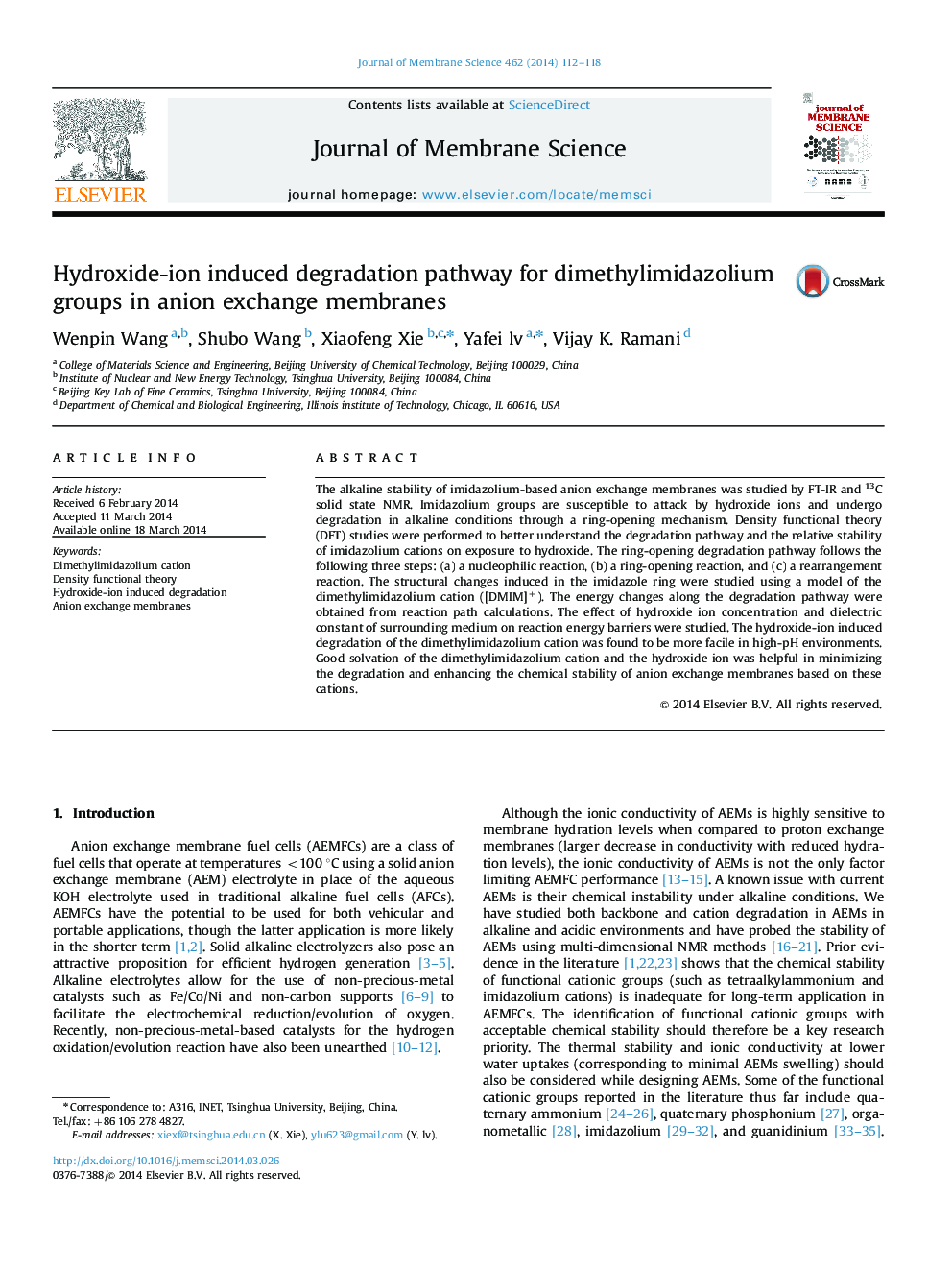| کد مقاله | کد نشریه | سال انتشار | مقاله انگلیسی | نسخه تمام متن |
|---|---|---|---|---|
| 633627 | 1456037 | 2014 | 7 صفحه PDF | دانلود رایگان |
عنوان انگلیسی مقاله ISI
Hydroxide-ion induced degradation pathway for dimethylimidazolium groups in anion exchange membranes
ترجمه فارسی عنوان
مسیر تخریب ناشی از هیدروکسیدهای سدیم برای گروه های دی متیلیمیدازولیوم در غشاهای تبادلی آنی
دانلود مقاله + سفارش ترجمه
دانلود مقاله ISI انگلیسی
رایگان برای ایرانیان
کلمات کلیدی
موضوعات مرتبط
مهندسی و علوم پایه
مهندسی شیمی
تصفیه و جداسازی
چکیده انگلیسی
The alkaline stability of imidazolium-based anion exchange membranes was studied by FT-IR and 13C solid state NMR. Imidazolium groups are susceptible to attack by hydroxide ions and undergo degradation in alkaline conditions through a ring-opening mechanism. Density functional theory (DFT) studies were performed to better understand the degradation pathway and the relative stability of imidazolium cations on exposure to hydroxide. The ring-opening degradation pathway follows the following three steps: (a) a nucleophilic reaction, (b) a ring-opening reaction, and (c) a rearrangement reaction. The structural changes induced in the imidazole ring were studied using a model of the dimethylimidazolium cation ([DMIM]+). The energy changes along the degradation pathway were obtained from reaction path calculations. The effect of hydroxide ion concentration and dielectric constant of surrounding medium on reaction energy barriers were studied. The hydroxide-ion induced degradation of the dimethylimidazolium cation was found to be more facile in high-pH environments. Good solvation of the dimethylimidazolium cation and the hydroxide ion was helpful in minimizing the degradation and enhancing the chemical stability of anion exchange membranes based on these cations.
ناشر
Database: Elsevier - ScienceDirect (ساینس دایرکت)
Journal: Journal of Membrane Science - Volume 462, 15 July 2014, Pages 112-118
Journal: Journal of Membrane Science - Volume 462, 15 July 2014, Pages 112-118
نویسندگان
Wenpin Wang, Shubo Wang, Xiaofeng Xie, Yafei lv, Vijay K. Ramani,
